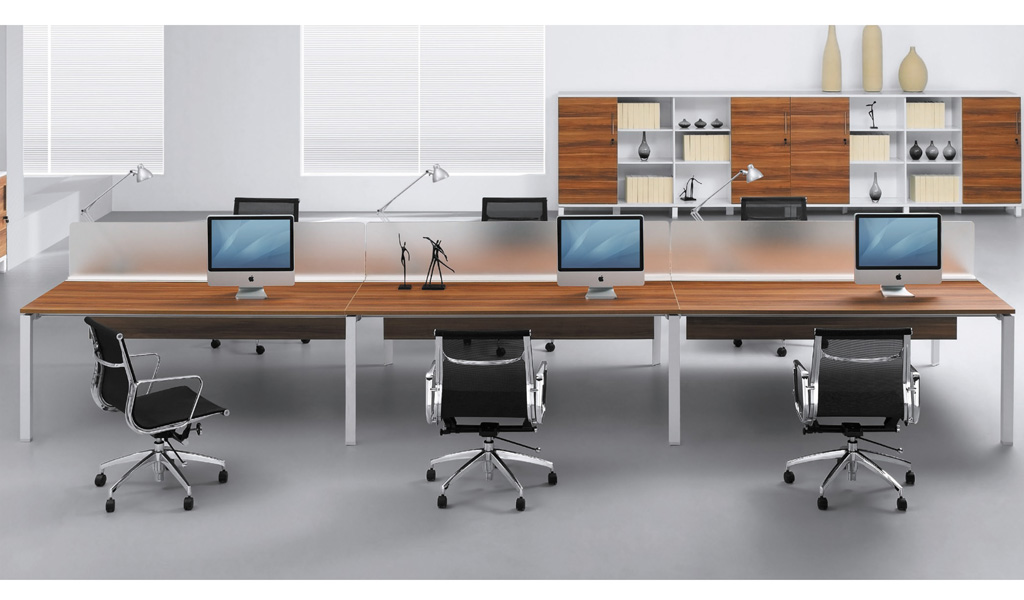Creating a productive and comfortable work environment starts with choosing the right office workstations. These setups impact not only the functionality of a workspace but also employee satisfaction, collaboration, and overall business efficiency. Whether you’re designing a new office or upgrading an existing one, understanding workstation types, layout strategies, and ergonomic principles is essential. This comprehensive guide will help you make informed decisions about office workstations and how they influence modern workplaces.
Understanding the Role of Office Workstations
What Are Office Workstations?
Office workstations are designated areas within a workplace where employees perform their daily tasks. They usually include desks, chairs, dividers, storage, and tech equipment. These work areas vary greatly in size and configuration based on the company’s goals, culture, and nature of work.
Why Workstations Matter
The right workstation setup boosts employee:
-
Productivity
-
Comfort and health
-
Communication and teamwork
-
Focus and task efficiency
Poorly planned workstations, on the other hand, can lead to fatigue, distractions, and reduced output.
Types of Office Workstations
Cubicle Workstations
Cubicles are semi-enclosed workspaces offering privacy and focus. Ideal for roles that demand concentration or sensitive tasks, they also help reduce noise.
Open-Plan Workstations
Open layouts encourage communication and transparency. They are popular in startups and creative industries but may cause distractions in high-interaction environments.
Modular Workstations
Modular setups are flexible and can be reconfigured based on team needs. They support future growth and allow businesses to adapt workspace layouts without major costs.
Collaborative Workstations
Designed for teamwork, these stations include larger desks or shared spaces where multiple employees can work together. Perfect for project-based workflows.
Standing or Sit-Stand Desks
Ergonomic and increasingly popular, these adjustable desks promote movement and help reduce back and neck strain during long work hours.
Choosing the Right Office Workstation Setup
Assessing Employee Needs
Every team has unique requirements. Ask:
-
Does their work require quiet focus or team interaction?
-
How much space does each role need?
-
What type of equipment or storage is necessary?
Involving employees in the planning process often results in more functional and accepted layouts.
Office Size and Layout Considerations
Smaller offices may benefit from open or modular setups, while larger spaces can accommodate a mix of workstation styles. Consider factors like:
-
Natural light availability
-
Foot traffic flow
-
Meeting room proximity
-
Emergency access paths
Branding and Aesthetic Alignment
Modern office workstations also serve as a visual representation of your brand. The style, color, and configuration should reflect your company culture and professionalism.
Ergonomics: A Critical Component of Workstation Design
Why Ergonomics Matter
Ergonomically designed office workstations reduce physical strain, fatigue, and injury. This directly translates to:
-
Increased employee morale
-
Lower absenteeism
-
Fewer worker compensation claims
Key Ergonomic Features to Consider
-
Adjustable chairs with lumbar support
-
Sit-stand desk options
-
Monitor arms for proper screen alignment
-
Footrests for leg comfort
-
Task lighting to reduce eye strain
Proper ergonomic training can also empower employees to personalize their setups.
Integrating Technology into Office Workstations
Power and Connectivity
Ensure workstations are equipped with sufficient:
-
Power outlets
-
USB ports
-
Charging stations
-
Network connectivity
This supports a tech-driven environment and prevents cluttered cabling.
Cable Management Solutions
Efficient wire management promotes a clean and safe workspace. Consider using:
-
Under-desk trays
-
Floor cable covers
-
Built-in grommets
Monitor Arms and Docking Stations
These additions free up desk space, provide better ergonomics, and support multiple device usage with ease.
Office Workstation Design Trends
Sustainability and Eco-Friendly Materials
Businesses are increasingly using sustainable wood, recycled materials, and low-VOC finishes to create environmentally responsible workstations.
Acoustic Privacy Panels
Noise reduction is a major focus. Panels, partitions, and sound-absorbing materials help maintain a quiet and focused environment.
Hot-Desking Solutions
With remote and hybrid models on the rise, some companies are shifting to shared workstation models that allow flexible seating.
Personalized Spaces
Giving employees a degree of control over their space—like adjustable lighting or personal storage—enhances comfort and productivity.
Common Mistakes to Avoid
-
Overcrowding the workspace
-
Neglecting ergonomic principles
-
Choosing aesthetics over functionality
-
Ignoring cable management
-
Failing to future-proof for growth or hybrid work trends
Thoughtful planning prevents these issues and sets your team up for long-term success.
Budgeting for Office Workstations
Factors That Influence Cost
-
Materials and finishes
-
Type of workstation
-
Custom vs. pre-fabricated furniture
-
Tech integration and accessories
Set a realistic budget but remember that quality office workstations are an investment in your team’s performance and health.
Tips to Optimize Your Spend
-
Mix workstation types based on employee roles
-
Repurpose or refurbish existing furniture
-
Partner with workspace consultants for smarter layouts
-
Buy in bulk to access vendor discounts
FAQs
What’s the ideal size for an office workstation?
The typical space ranges from 36–42 inches wide for desks, but collaborative roles may need more room. Adapt based on role and available office space.
How do I choose between cubicles and open workstations?
If privacy and focus are important, cubicles work best. For teamwork and creativity, open or modular workstations are better suited.
Are standing desks worth the investment?
Yes, they improve posture, reduce fatigue, and support employee well-being when used correctly with ergonomic accessories.
Can I mix different workstation types in one office?
Absolutely. A blended approach allows flexibility and caters to different work styles within your team.
How do I make my office workstations more eco-friendly?
Choose FSC-certified wood, low-emission materials, energy-efficient lighting, and recyclable components.
Conclusion
Well-designed office workstations are the backbone of a productive, happy, and engaged workforce. By choosing the right configuration, integrating ergonomic principles, and staying attuned to technology and design trends, you can create a workspace that supports your employees and your business goals.
Investing in your workstations is investing in your team — and that’s a decision you’ll never regret.
- Guide to Choosing the Right Office Workstations
- Discover how the right office workstations boost productivity, comfort, and collaboration. Learn layout types, ergonomic tips, trends, and smart setup strategies.
- Office Workstations, office furniture,
Related posts:
 Syna World: Exploring the Immersive Universe Created by Central Cee
Syna World: Exploring the Immersive Universe Created by Central Cee
 Event Management Market Set to Soar with Tech and Global Support
Event Management Market Set to Soar with Tech and Global Support
 Beyond Clean: Why Dubai Chooses Premium Dry Cleaning for Everyday Elegance
Beyond Clean: Why Dubai Chooses Premium Dry Cleaning for Everyday Elegance
 Personalised Dental and Hair Removal Treatments You Can Trust
Personalised Dental and Hair Removal Treatments You Can Trust
 Credit Score Hacks: Boost Yours by 100 Points Fast – A complete Guide
Credit Score Hacks: Boost Yours by 100 Points Fast – A complete Guide
 Trapstar Hoodie and Trapstar Jacket Where Streetwear Meets Legacy
Trapstar Hoodie and Trapstar Jacket Where Streetwear Meets Legacy
 Multi-Functional Living: Styling Your Home with a Sofa Cum Bed
Multi-Functional Living: Styling Your Home with a Sofa Cum Bed
 Crystal Prime 7000 Puffs Box of 10 Enjoy 7000 puffs, rechargeable battery & flavour variety—ideal for users & resellers.
Crystal Prime 7000 Puffs Box of 10 Enjoy 7000 puffs, rechargeable battery & flavour variety—ideal for users & resellers.







